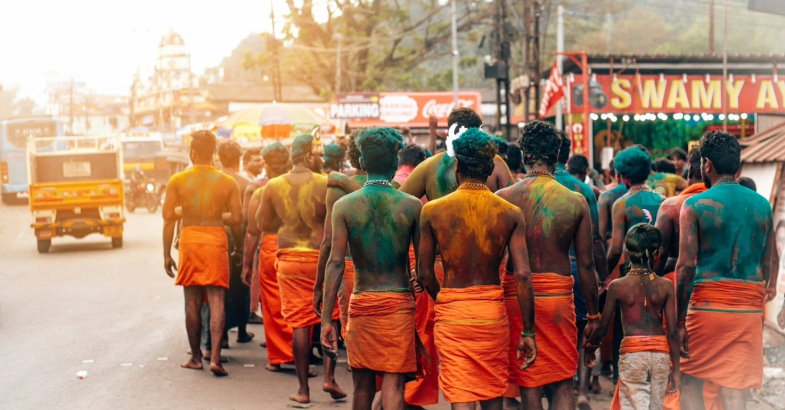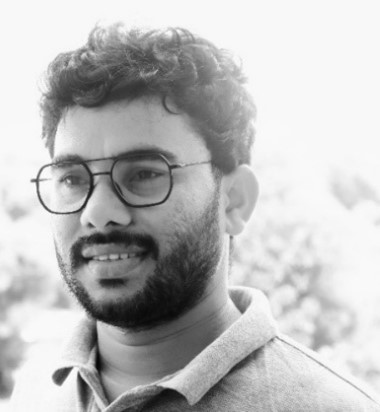
Introduction
India’s Scheduled Tribes (STs) are mostly treated as a single, undifferentiated category, with the assumption that their development needs, cultures, and challenges are essentially uniform. This notion underpins many tribal welfare policies. But behind the illusion of sameness lies a deeper reality: sharp and growing inequalities exist within the tribal society.
This blog explores socio-economic inequalities among five major tribal communities in Telangana: Lambadi, Koya, Gond, Kolam, and Chenchu. These tribes were selected based on their demographic significance and socio-cultural distinctiveness. Fieldwork was carried out across ten villages in the districts of Adilabad, Mulugu, Mahabubabad, and Nagarkurnool, which were chosen due to the high concentration of these communities. For each tribe, two villages were selected, and 40 households were surveyed from each village, resulting in 80 households per tribe and a total of 400 tribal households. The findings reveal a striking truth: while some tribes are progressing through education, employment, and access to welfare, others remain locked in cycles of deprivation due to geography, cultural taboos, and systemic neglect. This analysis draws on primary survey data collected during 2023–24 with support from CESS Hyderabad.
A Shared Category, Unequal Lives
Tribal communities may share a constitutional category, but their lived realities sharply diverge. As scholars have argued, tribal society in India is undergoing a transition from relative homogeneity to internal stratification. While some communities have managed to integrate into mainstream society, leveraging access to resources, others continue to face systemic exclusion. Studies in Telangana, also confirm this divide. These insights align closely with the primary data presented in this study.
The primary data reveal that housing conditions illustrate the first layer of inequality. While 58.2% of Lambadi households live in pucca homes, only 2.5% of Kolams do. Kolams trek over a kilometre to fetch water from hand pumps, whereas other community villages have drinking water sources within their premises. Education access is another barrier. Kolam and Chenchu children are mostly limited to Anganwadis; many Chenchu students walk up to 35 km for higher education. Illiteracy remains widespread, from 32.8% (Koya) to 36.6% (Gond), and graduation rates among Kolam, Gond, and Chenchu youth remain below 5%. Landholding data hides more than it reveals. Though over 80% of tribal households own land, the Kolam and Gond communities possess larger sizes, but these lands yield little without irrigation. Lambadis and Koyas, by contrast, benefit from smaller but better-irrigated holdings. Income and employment tell the clearest story. Lambadi (16.5%) and Koya (17.9%) communities have the highest households with salaried employment, while Kolam (2.3%) and Gond (6.8%) lag far behind.
Nearly three-fourths of Chenchu households earn less than ₹50,000 annually, while 12.5% of Koyas report incomes above ₹5 lakh. Health outcomes mirror these gaps. Chenchu and Kolam villages are 30–50 km from primary care, pushing families toward traditional medicine and home deliveries. On the contrary, Lambadi and Koya mostly prefer private healthcare. Nutritional deficiencies are severe among women and under-five children; between 22% and 27% of babies in Kolam, Gond, and Chenchu households are born under-weight.
Invisible Barriers: Culture, Geography, and Social Practices
Beyond economics, culture and geography create invisible walls. Festivals, once a symbol of joy, have become financial drains. 30% to 35% of households across communities’ report festival-related financial stress. Up to 42% borrow money for celebrations; a Kolam woman shared that a single festival could cost ₹3,000–4,000, sometimes rising to ₹50,000. “Festivals drain our savings,” she said. Dowry, once negligible, is now rising. Among Lambadi households, 65.8% reported dowry burdens; in Gond, it was 47.5%. Borrowing for dowry is common, 80% among Gond and Kolam.
Menstruation taboos continue to marginalise women among the Gond and Kolam. 55% and 62% households among these two tribes lack a separate room, forcing women outdoors during periods, risking health complications. School dropouts due to these taboos are high: 46% of girls leave after 10th, 38% after 12th. Women lose 5–6 workdays monthly due to restrictions, especially during agricultural seasons, causing productivity and income loss. Overall, these taboos affect the community’s well-being. These aspects reinforce existing inequalities among the tribes. While such practices and taboos were once common even among communities like the Lambadi and Koya, they have gradually moved away from such harmful norms, primarily due to greater exposure to mainstream society and improved access to education.
Unequal Access to Welfare and Policy Benefits
Welfare schemes in the region, though extensive on paper, show clear patterns of exclusion and uneven access across tribal groups. Awareness itself remains a major barrier; around 75–82% of Chenchu, Kolam, and Gond households were unaware of at least one key scheme, while Lambadi households were the most informed, with only 22% unaware. Access to housing schemes like Indiramma Housing is also unequal, with Lambadi (72%) and Koya (68%) benefiting the most, whereas Kolam (62%) lags. No tribe reported receiving houses under the new 2BHK scheme. Piped water under Mission Bhagiratha reached only five villages: two Koya, two Lambadi, and one Chenchu, while Kolam and Gond villages were excluded entirely.
Most Chenchu, Kolam, and Gond households (58–72%) received Liquefied Petroleum Gas (LPG) connections under the Ujjwala Yojana, but regular refilling remains a challenge due to income constraints. While schemes like Rythu Bandhu and Rythu Bima were widely accessed in agriculture, Gond, Kolam and Chenchu farmers were excluded entirely from machinery subsidies, whereas Lambadi farmers reported higher uptake. Scholarship access was highest among Lambadi (75%) and Koya (68%) students, but remained low among Kolam (37%), Chenchu (36%), and Gond (29%) due to school dropouts and weak retention. Likewise, Employment-related schemes follow similar trends. Public job reservations were accessed by 9.4% Lambadi and 8.1% Koya respondents, while Kolam and Gond had negligible access (0–1%). Self-employment support, like subsidies for dairy or kirana stores, was used by 11% of Lambadi and 7% of Koya households, but only 2% of Gonds and none of the Kolams. Overall, despite a wide range of welfare provisions, actual benefits remain highly unequal. Notably, about 62% of respondents from Kolam, Gond, Koya, and Chenchu communities reported experiencing discrimination, particularly from ITDA (Integrated Tribal Development Agency) officials, claiming that officials work in favour of certain tribal communities like Lambadis.
Migration: Coping Mechanism or Vicious Cycle?
Out-migration is adopted as a survival strategy across the studied communities. Seasonal and circular migration among the Gond and Kolam groups offers short-term relief through wage labour in nearby towns and agricultural belts. Many students from these communities drop out of school to migrate for wage labour alongside their families, in order to support household incomes. This not only disrupts their education but also limits long-term opportunities for upward mobility. However, migration to urban centres remains rare among these communities due to cultural apprehensions and fears of social and ritual “contamination.” These deeply rooted beliefs, combined with limited social networks and low levels of education, restrict their exposure to urban opportunities.
In contrast, the Lambadi and Koya communities tend to migrate to cities such as Hyderabad for employment and education. This greater mobility is partly due to better educational access, social integration, and a relatively adaptive outlook. As a result, there are isolated but notable success stories.
Policy Lessons and the Case for Sub-Categorisation
India’s tribal policy has moved from protective discrimination to inclusive development, yet actual progress demands recognising disparities within tribal communities. Inter-tribal inequalities, driven by cultural norms, geographic isolation, and unequal access to resources, emphasise the need for differentiated, equity-focused strategies.
Current policies treat Scheduled Tribes (STs) as a homogenous group, offering uniform reservations and development schemes. However, this research underscores the urgent need for sub-categorisation within the ST list to ensure that the most marginalised communities, such as the Kolam, Chenchu, and Gond, receive focused attention. Policy measures should include sub-classification of STs based on levels of deprivation, targeted infrastructure investments in remote tribal villages, and localised awareness campaigns to address educational gaps and harmful cultural practices. Strengthening monitoring and accountability mechanisms is vital to ensure fair delivery of welfare schemes.

Author’s Bio:
Santhosh Gugulothu is a Ph.D. scholar in Sociology at the Centre for Economic and Social Studies, Hyderabad. His research focuses on social inequalities, education, migration, and women’s health among marginalised communities in Telangana. He has conducted extensive fieldwork among Scheduled Tribes and Denotified Tribes (DNTs).

